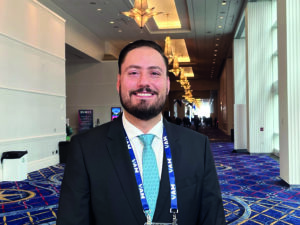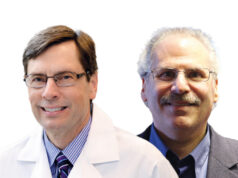
Older-generation vascular surgeons are keen to hone their endovascular skills, while the younger generation are looking to develop their capacity to treat aortic pathologies—but surgeons at all stages in their career favor hands-on learning to continue their development.
These are among the key findings of a multi-generational survey of Mexican vascular surgeons, intended to gain a greater understanding of the training and developmental needs of the country’s growing vascular community.
“We are a facing a change in Mexico, where an increase in the number of vascular surgeons is needed, so the response has been to open more hospital programs and more available positions,” Rodrigo Garza-Herrera, MD, representing the Mexican Society for Vascular Surgery, told VAM 2023 delegates at Thursday morning’s International Chapter Forum Educational Session.
Garza-Herrera explained that the number of vascular surgeons practicing in Mexico is expected to expand rapidly in the coming years, from around 1,100 now to more than 1,600 by 2026. Consequently, the millennial generation—those born between 1980–1996—will make up a greater proportion of the workforce by the end of the decade, increasing from 43% at the current count, to an estimated 63% in 2026.
To understand whether these demographic changes will impact the training needs of its vascular community, the Mexican Society has surveyed all of the vascular surgeons practicing within the country, and the results of the survey have informed the development of new training initiatives and programs. The work has also shone a light on some important differences—and similarities—spanning the generational divide.
In total, 356 individuals took part in the survey, predominantly male (74%) and mainly from the millennial generation (46%), followed by generation X (34%) and those from the baby boomer generation (20%).
The survey suggests that there is a far greater proportion of women entering Mexico’s vascular surgery field, with men outnumbering women 8:1 in the boomer generation, compared to 1.6:1 in among the millennials, a trend that Garza-Herrera said he “hopes to see continuing.”
Surgeons were also polled on their academic needs, with seven key fields identified for them to prioritize their areas of strength and weakness, including: venous pathology, open arterial surgery, endovascular therapy, vascular access, aortic disease, vascular anomalies and advanced wound care.
Venous pathology was reported as the biggest strength in 41% of participants, whereas the greatest weakness was vascular malformation, chosen by 52% of respondents—an area that was particularly pronounced among millennials, 63% of whom selected this criteria.
The survey asked participants to identify the areas where they felt the greatest need for improvement, to which 54% felt that they need to improve their endovascular skills, and 32% felt that an increased competence in treating vascular malformations is needed.
“Baby boomers showed the highest need for improving endovascular skills and millennials showed the highest need to improve their capacities in the treatment of aortic pathology,” Garza-Herrera commented, pointing out a generational difference highlighted through the survey responses.
Results from the survey, which was conducted in 2020, have already shaped training initiatives being put into practice in Mexico.












